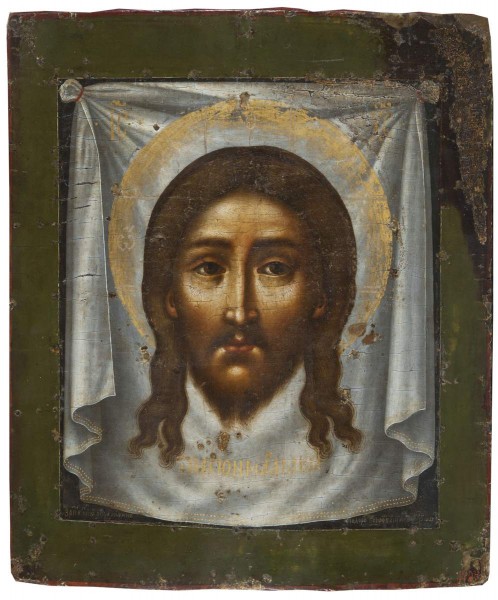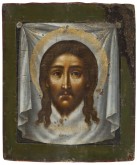The Saviour Not Made By Human Hands
1677
- Дерево (липа), доска цельная, без ковчега, две врезные встречные шпонки (утрачены), pavoloka, gesso, tempera. 37,6 × 32,5 × 3
- ДРЖ-2152
Received in 1912- Происходит из ризницы Успенского Иосифо-Волоцкого монастыря
-
Сведения о реставрации:
Раскрыта в Русском музее (до 1916)
- Period Old Russian Art
- CategoryBiblical Subject
- Share
The Saviour Not Made by Human Hands became popular in Byzantine art in the tenth century, when the miracle-working cloth with the image of Jesus Christ was transferred from Edessa to Constantinople, capital of the Byzantine Empire. The image made its way into Russian icons and church murals in the twelfth century. Known in the West as the Volto Santo or Veronica, The Saviour Not Made By Human Hands was particularly popular in Russia in the seventeenth century and Simon Ushakov received many commissions for such icons. This particular work originates from the St Joseph of Volokolam Monastery, which owned many icons commissioned from Ushakov in memory of the dead. Russian Museum: From Icons to the Modern Times. Palace Editions, St Petersburg, 2015. P. 37.

